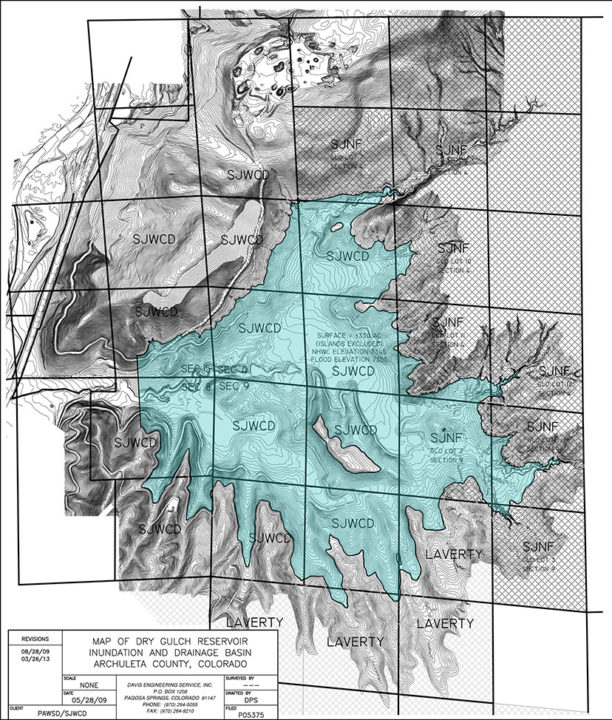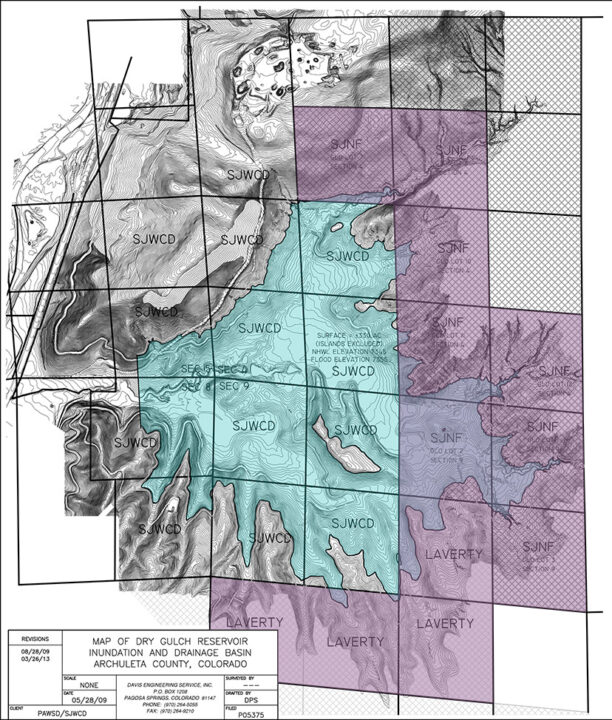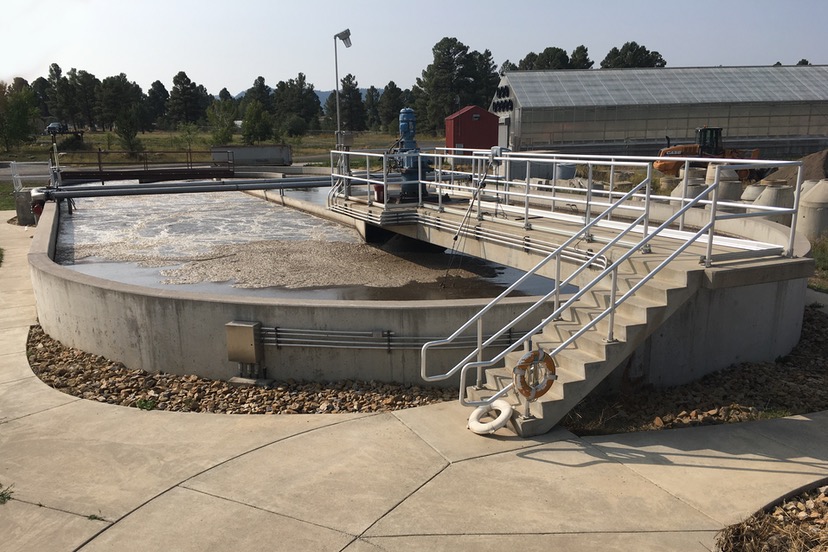PHOTO: The PAWSD oxidation ditch at the Vista Waste Water Treatment Plant.
Declaration of policy. It is declared to be a matter of statewide concern and the policy of this state that the formation of public policy is public business and may not be conducted in secret.
— from Colorado Revise Statutes 24-6-401.
For this installment, I will begin by stating that I currently serve on the Pagosa Area Water and Sanitation District (PAWSD) board of directors, but that this editorial reflects only my own opinions and is, in no way, intended to reflect the opinions of the other four PAWSD board members.
The formation of public policy, in Colorado, is ‘public business’. In most cases, Joe Public has little interest in the policies being formulated. Understandably, considering that most government policies will have no noticeable impact on Joe Public’s life. No direct impact.
But I suspect it’s a healthy practice for our governments to keep the citizens informed. Not just because the taxpayers have a right to know how their money is being spent, but also because the requirement to explain yourself helps you make better-thought-out decisions.
Typically, however, local governments don’t take the time to explain themselves. Relying on the media to do the explaining is not necessarily an ideal choice.
In this multi-part essay, I’ve been discussing goals for 2023, and primarily focusing on three ‘priority’ goals agreed upon by the Pagosa Springs Town Council last summer, which are: a smoothly-functioning wastewater pipeline, the development of workforce housing, and the creation of a new taxpayer-funded recreation district.
The sewer pipeline seems to be functioning at the moment, successfully pushing the town sewage uphill to PAWSD’s Vista Waste Water Treatment Plant. So maybe not a big issue, at the moment?
Meanwhile, PAWSD has its own sewer treatment issues at the Vista Treatment Plant. The Colorado Department of Public Health and Environment (CDPHE) is requiring PAWSD to add an additional treatment process to the waste effluent to remove nitrogen and phosphorus. PAWSD has had nitrogen and phosphorus in its waste effluent since the 1970s, but CDPHE has determined that it’s now a serious problem — serious enough to require a $20 million plant upgrade. (That’s just a rough estimate of the cost.)
It’s possible that the Town and PAWSD could come up with a joint plan for the future, that would involve consolidating two sanitation districts into one. That’s in fact one of the Town Council’s goals… or at least, it was one of their goals last summer, when their pump stations were threatening to completely fail.
But as we all know, you don’t fix the hole in your roof when the sun is shining.
PAWSD is also dealing with a planned treatment plant on Snowball Road… the plant that produces the drinking water for downtown Pagosa… and for properties along Highway 84, and for properties along Highway 160 east of downtown. The cost of that new plant is estimated at roughly $38 million.
And speaking of “east of downtown” — that’s where we find the Running Iron Ranch, a 660 acre ranch and gravel mining operation owned by PAWSD, and purchased as the site for a future 32,000-acre-foot reservoir that would look something like, if you were making an engineering drawing:

You can see Highway 160 cutting through the top left corner, and the gravel mine as a white patch at the top, center.
If you were making an engineering drawing showing the parts of the reservoir that PAWSD did not yet own, but would need to acquire in order to build this 35,000-acre-foot reservoir, you could mark those properties in purple.

As the result of a lawsuit, the plan was later downsized to a future 24,000-acre-foot reservoir, and then later, as the result of another lawsuit, it was downsized to a future 11,000-acre-foot reservoir.
There are no plans, currently, that include a way to finance even an 11,000-acre-foot reservoir.
I just mentioned that PAWSD is looking at a two future projects that might put the taxpayers up to $58 million in debt. Perhaps that’s enough debt, for the time being.
Maybe a new water reservoir is not in the cards, right at the moment.
But something else might be in the cards.
While considering the cost of the new Snowball plant, the staff and board have discussed a potentially smart way to deal with housing.
The company that will likely build the Snowball plant will need housing for their employees during the year of construction, and they’ve estimated the cost of housing their employees at about $2 million. This assumes the employees would be staying in motels, or maybe STRs. That $2 million would be part of the construction contract, paid by PAWSD customers.
But what if PAWSD were able to provide that employee housing?
For example, PAWSD owns a 660-acre ranch at the east end of town. Why not place some affordable workforce housing on the portion of the ranch that adjoins Highway 160? Preliminary estimates suggest that ten or twelve modular buildings could be installed on the ranch property for considerably less than $2 million, perhaps as little as $1.2 million Then, when the Snowball project is finished and the employees move out, new local workforce families could move in.
The future rent could help retire the PAWSD debt on the Snowball project. In a small way.
The taxpayers would see a savings… and the workforce would have a few more affordable homes to live in.
Potential downsides to this type of housing? Our local government bureaucracies are not currently designed to manage housing projects, and the management of rental housing definitely requires a certain skill set.
But we do have both non-profit and for-profit management companies in Pagosa. On the non-profit side, I’m thinking of Archuleta Housing Corporation, which manages about 60 apartment units downtown…Archuleta County Housing Authority, which manages about 50 apartment units, also downtown… and Durango-based Housing Solutions for the Southwest, which manages the 20-unit Socorro apartments… also downtown.
The preliminary research done by the PAWSD staff and board, so far, suggests that safe, comfortable — but cozy — housing units could be developed on public land for perhaps $100,000 per unit.
Compare that cost to the project proposed by Dallas-based Servitas LLC. Servitas is proposing safe, comfortable — but cozy — housing units on public land, at a cost of about $345,000 per unit. The Town Council appears to be seriously considering the Servitas proposal.

